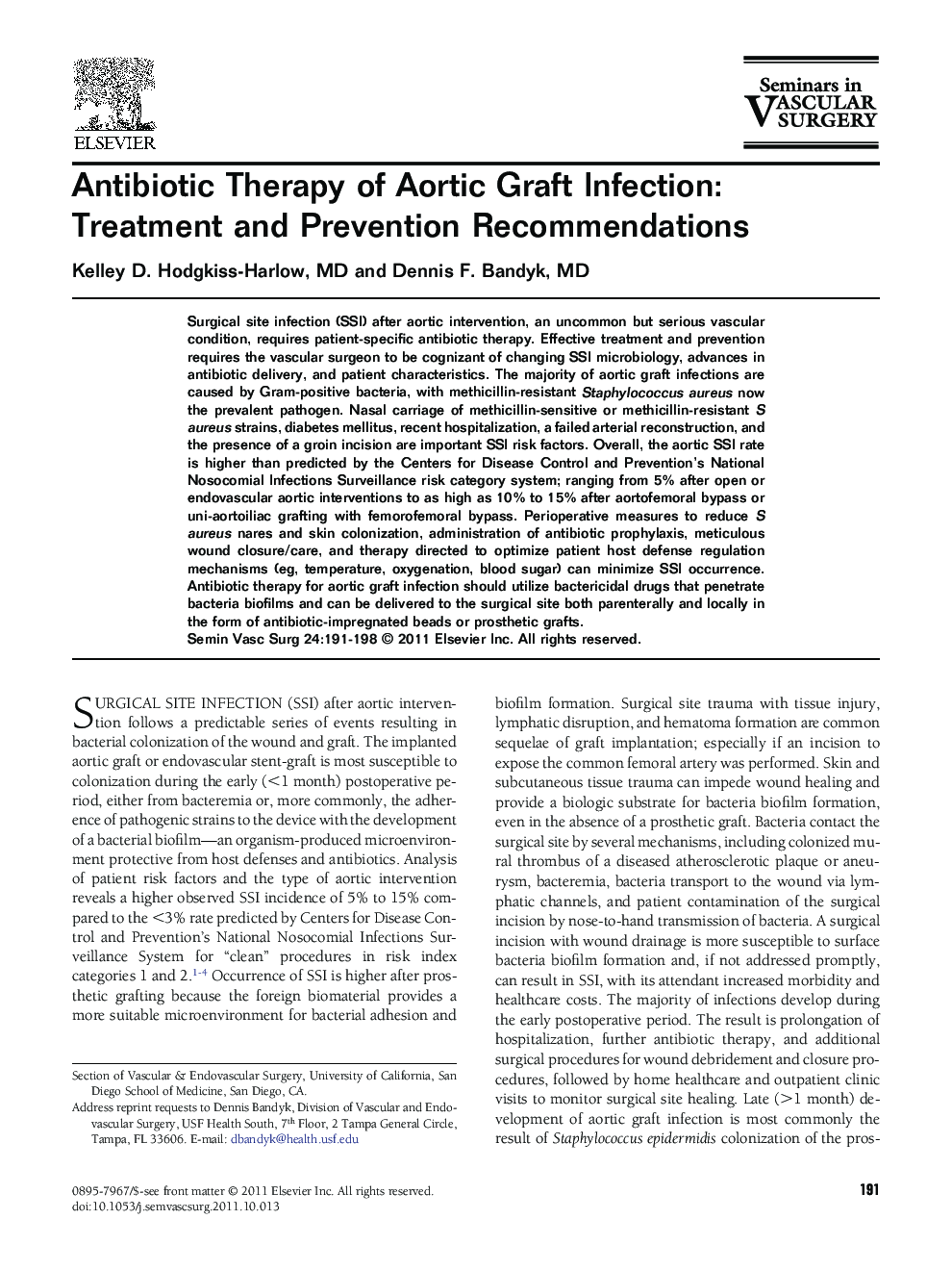| Article ID | Journal | Published Year | Pages | File Type |
|---|---|---|---|---|
| 3026138 | Seminars in Vascular Surgery | 2011 | 8 Pages |
Surgical site infection (SSI) after aortic intervention, an uncommon but serious vascular condition, requires patient-specific antibiotic therapy. Effective treatment and prevention requires the vascular surgeon to be cognizant of changing SSI microbiology, advances in antibiotic delivery, and patient characteristics. The majority of aortic graft infections are caused by Gram-positive bacteria, with methicillin-resistant Staphylococcus aureus now the prevalent pathogen. Nasal carriage of methicillin-sensitive or methicillin-resistant S aureus strains, diabetes mellitus, recent hospitalization, a failed arterial reconstruction, and the presence of a groin incision are important SSI risk factors. Overall, the aortic SSI rate is higher than predicted by the Centers for Disease Control and Prevention's National Nosocomial Infections Surveillance risk category system; ranging from 5% after open or endovascular aortic interventions to as high as 10% to 15% after aortofemoral bypass or uni-aortoiliac grafting with femorofemoral bypass. Perioperative measures to reduce S aureus nares and skin colonization, administration of antibiotic prophylaxis, meticulous wound closure/care, and therapy directed to optimize patient host defense regulation mechanisms (eg, temperature, oxygenation, blood sugar) can minimize SSI occurrence. Antibiotic therapy for aortic graft infection should utilize bactericidal drugs that penetrate bacteria biofilms and can be delivered to the surgical site both parenterally and locally in the form of antibiotic-impregnated beads or prosthetic grafts.
